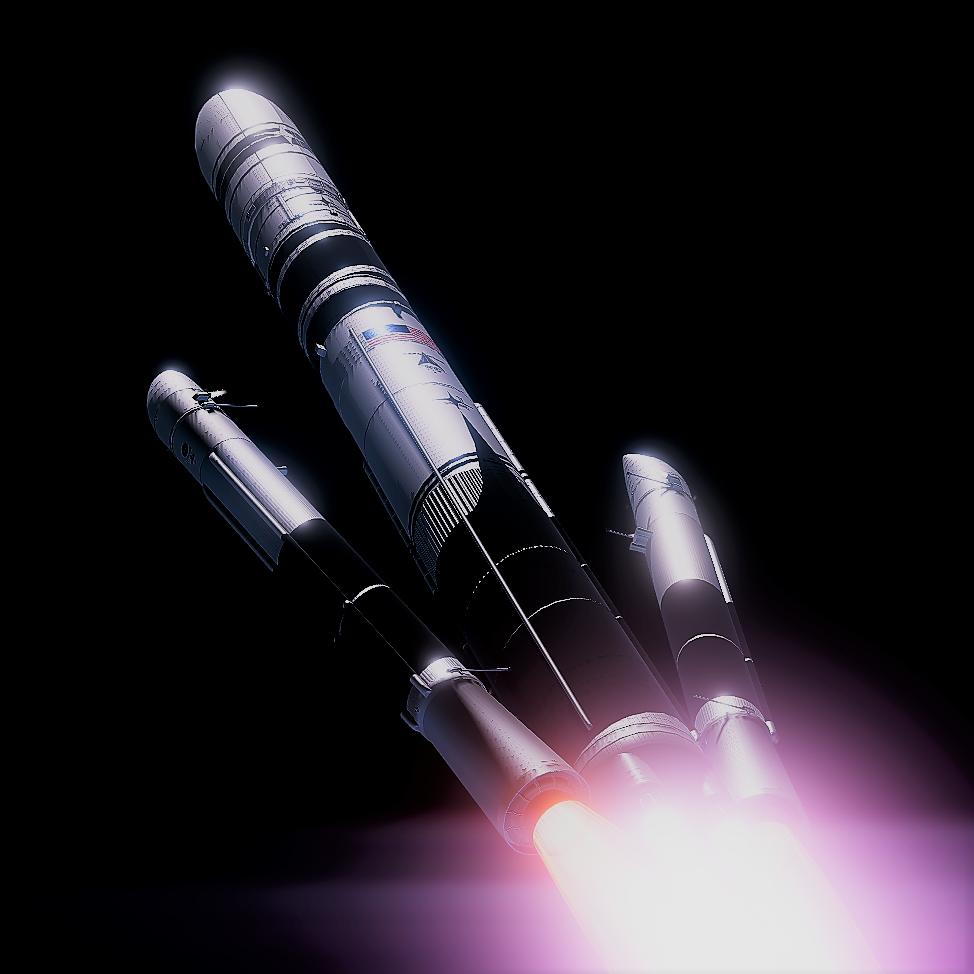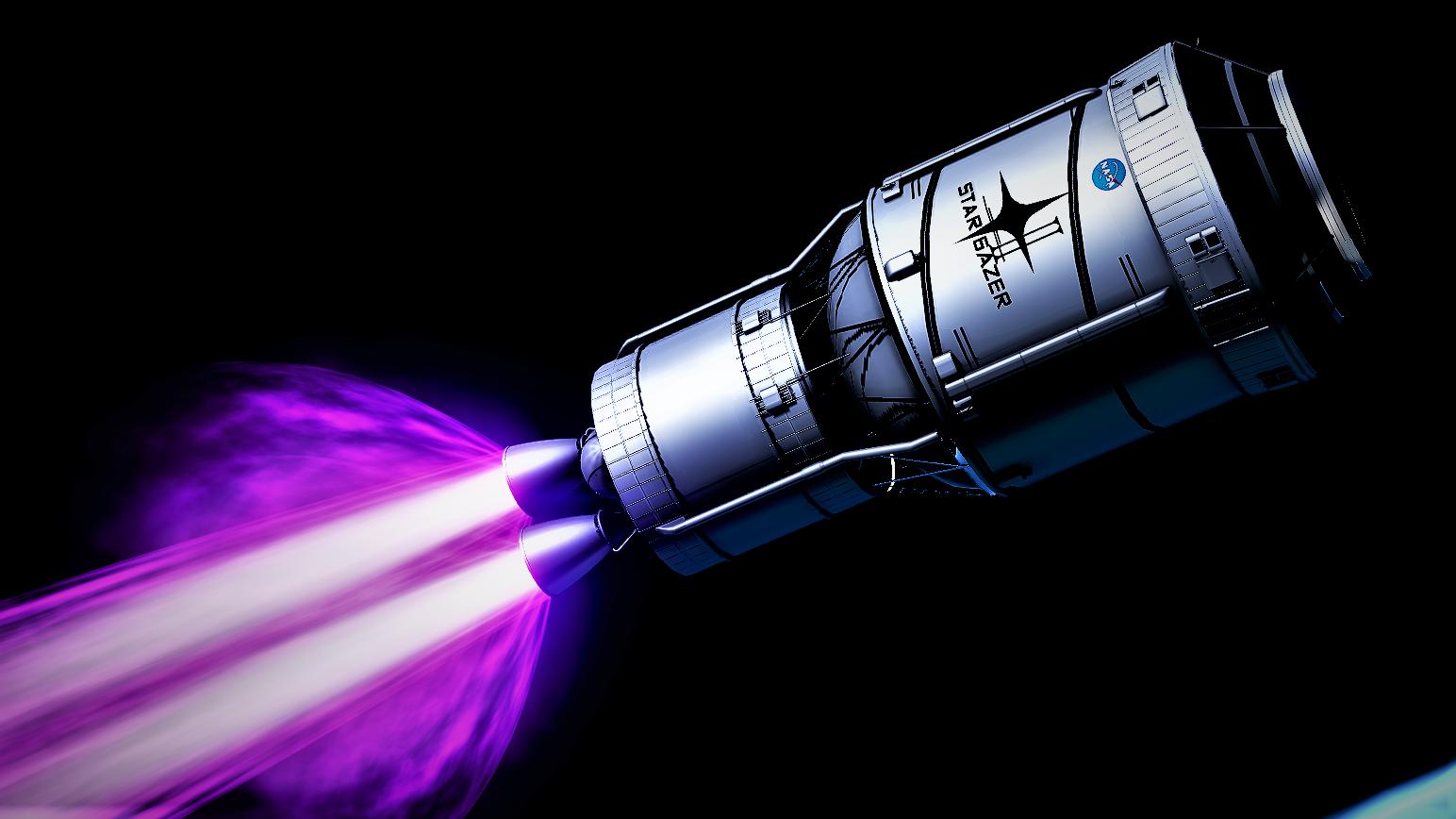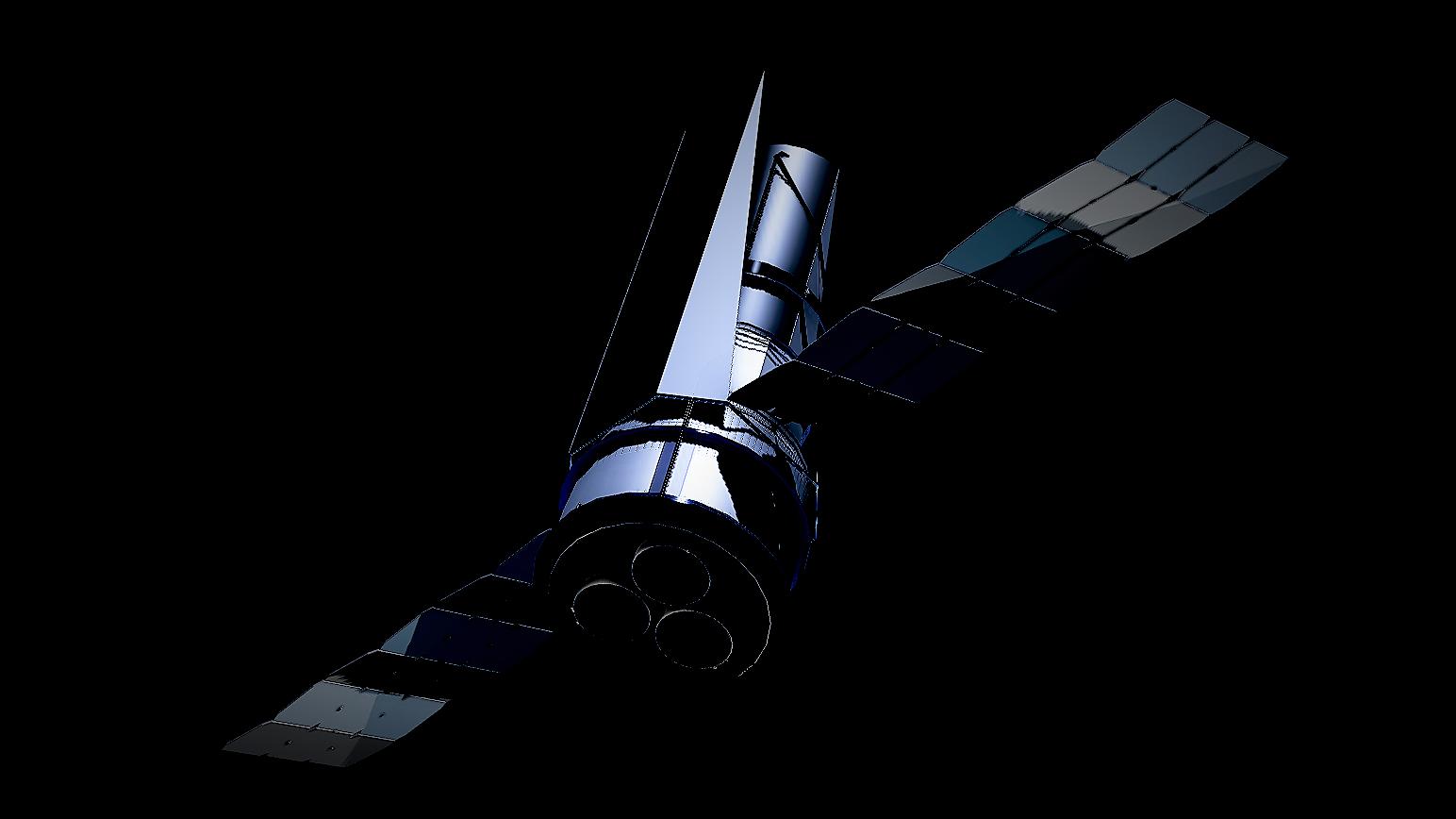Hello again, Everyone👋😁
Well, it looks like we meet once again! Alright, on this chance, I have brought to you a high-quality and also the most sophisticated rocket I've ever made for now. Please at least read the "Important Notes Before Downloading" part of the description so the flight will go as planned. Also, please let me know if there are any critiques and suggestions you have, I would love to hear them!
Alright, without further ado, let's begin the main topics! Don't forget to enjoy reading it!😁
Keep in mind that everything below is pure fiction.😉
•
•
•[| STARGAZER II BLOCK C |]•

•Table of Contents :
I. Craft Description
II. The Core, The Second, and The Harmony
III. Vizzy, Auto launch, and the other things
IV. Important notes before downloading
V. Other Versions
VI. Closing
•
•

•Craft Description 📋
We are back again with the Stargazer Program! This description is a bit serious so, buckle up!🫡
This is the second design proposed after the first successful launch of the first rocket, the Stargazer I. The Stargazer II is one of the biggest, and the most powerful and efficient rocket ever designed and built at the time. This rocket is built to be a heavy lift launch vehicle (HLLV), even though this rocket has all the ability to become a Super Heavy Launch Vehicle (SHLLV). It has a payload capacity of over 90 tons to High Droo Orbit (HIDO/~900km) and stands as tall as a 35-story building. This rocket also maintains the (ehem) signature livery design from the Stargazer I as it was becoming the identity of the program. Looks cool right? 😉
While being this large, the rocket is surprisingly very efficient at vacuum and sea level altitude. After the successful test of the Stargazer I, all the necessary experiment data were processed to make a new rocket propulsion that focuses on the new propellant RP-XII, which is also getting a new nickname "Maeve". The process gives birth to the first core stage engine that utilizes the Maeve Propellant (RP-XII) as the main propellant, the Hermes Engines. They were massive, powerful, yet so efficient. Boasting max Isp of 551s, while also maintaining a max thrust of over 7000 kN each, making it a truly powerful giant even without mentioning the twin boosters.
All of this is needed to be accompanied with a strong, sturdy, and equally large Launchpad/Launch tower. A modified Launchpad 69D is chosen to be used. It has a total of 7 arms, and several explosive bolts that holds the rocket in place.
On the side of the program, this rocket is built to test the new engines and some theories about The Maeve Propellant. This rocket carries a 80 ton Solar Radiation, Brightness, and Activity Research Satellite (SORIGVIC-II) with the purpose to monitor various activities of the main star, Juno, after some unusual activities were detected from older Solar Research Satellites. That is all information that has been declassified/available. It's believed that there's still some information classified about the rocket.
Alright! That's everything you should knew about this particular design, off to the second point, The Staging!
•
•
•THE CORE, THE SECOND, AND THE HARMONY 🚀


The Stargazer II also had a similiarity with Its predecessor, being a two staged rocket composed of 2 the core stage and the second stage. On this part, we will specifically describe each one and their propulsions. The first one on the list is, the Hermes!
I. HX-II Hermes High Altitude/Vacuum Optimized Core Stage Propulsion
Hyperion Experimental Series II, or also known as Hermes, is the propulsion designed from the data collected when the first Stargazers sails through the cosmos. This core stage is using The Maeve (RP-XII) as the main propellant making it very efficient and also powerful on vacuum. On vacuum, the engine can generate upto 7,197 kN of thrust, 1,331 kg/s of mass flow with 551s of Isp. No other core propulsion systems beats this recordbreaking efficiency, and there is 5 of them on the core stage. Very good isn't it? However, on sea level, it only generates half of the power and losing much of the specific impulse. Not really ideal for liftoffs, but phenomenal in space. That is why, 2 gigantic twin solid rocket booster is strapped to lift this flying apartment to the stratosphere. SRB? Hell yeah! Let's move on to them!
II. Phoenix Mark V Solid Rocket Booster
Ah, the SRBs. Who doesn't love them? Haha, anyways, because of the core stage propulsions were focused on high level flights, these two booster really helps lift this rocket off the ground. These are the Phoenix Mark V. This type of SRB is one of biggest solid rocket booster ever built by any space companies. Even better, they were modified to accomodate this massive rocket. But still, these kind were very much reliable since they were used alot by space industries. They are not really expensive if we put the whole price scale of the rocket. These explosive twin produced 19.5 MN each during liftoff, this amount of thrust truly pack-a-punch during liftoff. Mark Vs also known as a power hungry boosters as they have 9,574 kg/s mass flow and about the Isp, eh let's not talk about it. Anyways, that's all about the booster, we're done on the core stage. Let's move on to the second!
III. XEPHALUS NT-XII-P VACUUM OPTIMIZED SECOND STAGE PROPULSION
If you thought the core stage were impressive, then meet their even better younger brother, the Xephalus!
Straight off the bat, the Xephalus is the most efficient vacuum propulsion aside from the Ion engines. This propulsion also shares nearly the same backstory as the Hermes, being born from a program. This propulsion is so precious that the company declassifies only a handful of information. Heck, even the declassified Informations were crazy, just think about the classified ones! From what we know, this powerful beauty has reached an Isp of over 4,000s during testing! With the efficiency being this high, small amount of propellant can generate alot of thrust! Like 8x more efficient than any other vacuum engines! Other known information is the second stage has a total delta V of 36,3 km/s and over 5,357 kN of thrust, pretty high. On top of that, it is speculated to have some kind of nuclear energy on the propulsion because of the Isp being astronomical.
Alright! That's everything about the first and the second stage. Let's move on to the next category, Autolaunch!
•Vizzy, Autolaunch, and the other things💾

The Autolaunch on this rocket is basically an improved version of the Stargazer I's Vizzy. The program itself has better orbit accuracy, higher orbit height, and better time countdown. The program itself is divided into 3 segments. Main Sequence, Time Commands and Time Structure. This program was pretty similiar to Rocketlover2333's Long March 5 time counter vizzy in terms of how it works and function.
Alright, this enhanced program will launch the rocket automatically to High Droo Orbit around 800-900 km with eccentricity of 0.00 most of the times. With this, you can do some productive activities while waiting your payload to be sent to space automatically! Speaking about payloads, you can put your very own stuff inside the fairing! Just make sure that it fits comfortably inside. The size of the fairing itself is around 9m x 9m x 20m. Pretty large space inside!
And also, here's the program phases :
I. Launch Countdown
When Activation Group 1 is on, the program will engage and waits launch confirmation from the control center. After that, countdown will be initiated. Starting from T-12.
II. Liftoff and Ascending Phase
After the countdown is complete, the expendable bolts holding the rocket will release and launch the rocket with a breathtaking launch. The Ascending Phase last until the craft reached speed of 400m/s and altitude of more than 5 kilometers.
III. Gravity Turn
After the previous phase is finished, the gravity turn maneuver is initiated, slowly turning the rocket to 45° angle. During this time, The Phoenix SRBs depletes and seperates from the rocket.
IV. Reaching Target Apoapsis I
The program waits until the Apoapsis reached 200km.
V. Reaching Target Apoapsis II
After that, timewarp is enabled until the perfect time to engage second burn. It will wait until a new Apoapsis point is formed at around 800/900 km high. After this phase done, the core stage seperates and the second stage activates.
VI. Raising Overall Orbit Height
After the core stage seperates, Timewarp is enabled until the perfect window engage the third burn. This burn will raise the periapsis from 200km to ~890km.
VII. Mission Complete
The program shuts down the Xephaluses and seperates the payload, finishing the flight.
Alright! That's all about the rocket! Let's move to the last one!
•[II IMPORTANT NOTES BEFORE DOWNLOADING II]•
I. The rocket and the program doesn't work on RSS
II. It is recommended to turn off heat damage
III. Physics settings as high as possible
IV. This craft has a total of 4377 parts, not great for your device
V. Program once activated can't be deactivated
VI. There is a chance of some random parts from the booster to explode during flight. It doesn't affect the course of the flight fortunately
VII. AGs are labeled according to their function for easier controls
•Other Versions:
I. No Launch Pad (2534 parts)
II. Lower Part I (1635 parts)
•Closing
Well, everything has Its end. Thank you for reading the description! I hope you like it, and have a great day! See you later😉
-SpaceJunk69, out.
🗿🍦


GENERAL INFO
- Created On: Windows
- Game Version: 1.0.8.0
- Price: $-2,840,418k
- Number of Parts: 4377
- Dimensions: 137 m x 46 m x 33 m
PERFORMANCE
- Total Delta V: 2,762.1km/s
- Total Thrust: 89.7MN
- Engines: 163
- Wet Mass: 4.99E+7kg
- Dry Mass: 1.6E+6kg
STAGES
| Stage | Engines | Delta V | Thrust | Burn | Mass |
|---|---|---|---|---|---|
| 1 | 10 | 168m/s | 36.0MN | 3.8m | 4.99E+7kg |
| 2 | 2 | 884m/s | 40.8MN | 38s | 2.12E+6kg |
| 3 | 0 | 0m/s | 0N | 0s | 1.05E+6kg |
| 5 | 6 | 31.2km/s | 5.4MN | 15.3m | 2.28E+5kg |
| 6 | 3 | 2,728.0km/s | 3kN | 344.41days | 81,623kg |
| 14 | 32 | 1.8km/s | 12kN | 2.21hours | 81,623kg |
Comments
29 Upvotes
Log in in to upvote this post.














good as well@SpaceJunk69
@ColumbiaHavenXAerospace pretty good! How about you?
@SpaceJunk69 how is 2025 is it good?????
@SpaceJunk69 you plan to make a bigger version of the stargazer yet?
@SpaceJunk69 right I see
@JACKIEAEROSPACEINDUSTRIES Well, maybe not for this time periode though since I have been busy with school lately, but I'll think about it!:}
@SpaceJunk69 I have a question can you make a bigger version of this rocket? You would call it stargazer block four this could be inspired from the space launch system or the Apollo program you could see that they can carry payroll to space stations or the moon so if you could make a crew version of this rocket with an even larger variant of the stargazer block two
@JACKIEAEROSPACEINDUSTRIES All pad arms is controlled by activation group 3 and slider 4
I know I can figure out this rocket can work in RSS because it’s so powerful and RSS has a lot of atmosphere so that should make the rock look less powerful
Or three
@SpaceJunk69 what slider slider 12 or four
@JACKIEAEROSPACEINDUSTRIES It is activated via a slider if i remember correctly
I have one question how do you retract the launchpad arm?@SpaceJunk69
@JACKIEAEROSPACEINDUSTRIES Ohh, okay, the Activation Group for the rocket is as follows:
1. Autolaunch
2. Launch Light
3. Pad Arms (Auto)
8. LG
9. Solar Panel
10. RCS
Thankyou for your patience mate:] I don't know how the labels ceased to exist in that version, and I'm sorry for that!
@SpaceJunk69 what I am meaning is that there is no action group labels for the rocket with no payload
@JACKIEAEROSPACEINDUSTRIES I don't understand mate:{
@SpaceJunk69
No I am talking about the rocket that you sent me the link. It’s not the one that you uploaded, but remember group listings.
@JACKIEAEROSPACEINDUSTRIES It is labelled so you don't have to worry
What are the activation groups?@SpaceJunk69
@spacechallenger1986 https://www.simplerockets.com/c/CMaTW2/Stargazer-II-with-Launchpad-no-payload
Here
@spacechallenger1986 yeah, I will try again later
Well, what I am trying to say is the launchpad is what I want as well. You forgot to @SpaceJunk69
@spacechallenger1986 you can delete the whole program inside the command disk brother
You forgot to add the launchpad I like it maybe you can add it in as well, but I don’t want that program launching a rocket@SpaceJunk69